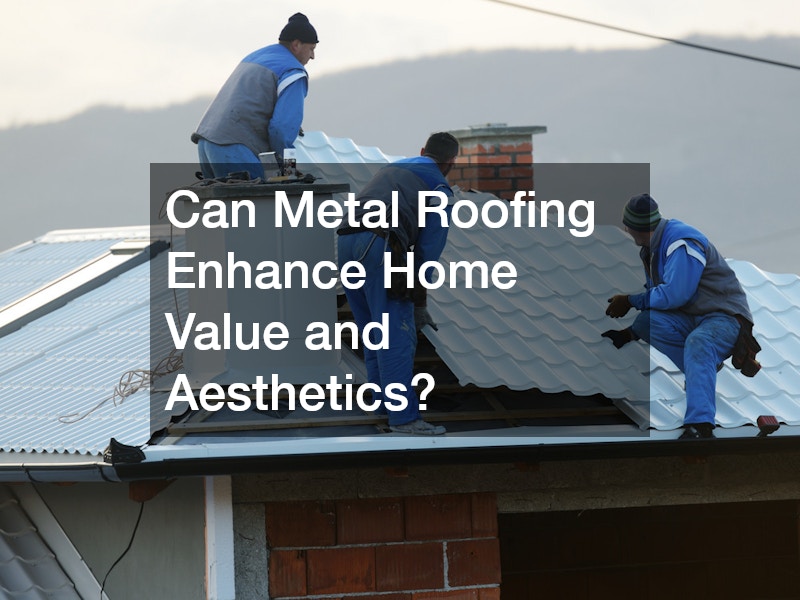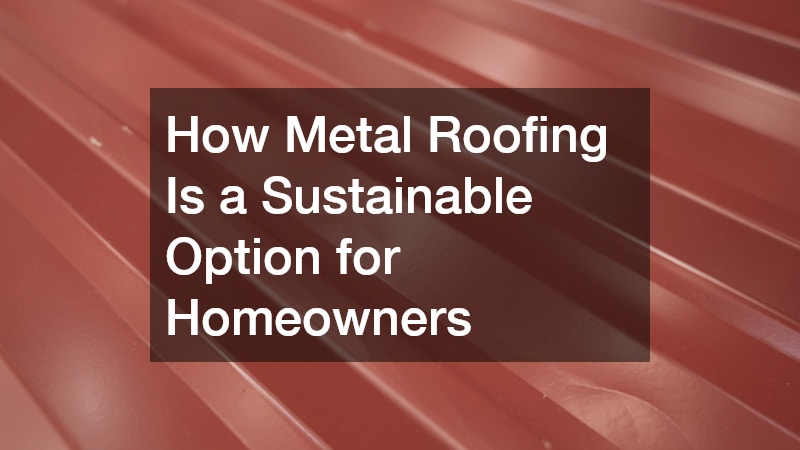In today’s world, the importance of sustainability in home construction and renovation is increasingly becoming a priority. Among the materials gaining traction for their sustainable qualities is metal roofing, known for its environmental benefits.
What Makes Metal Roofing a Sustainable Choice?
Durability and Longevity
Metal roofs boast a remarkable lifespan, often exceeding 50 years, which far outlasts traditional roofing materials. This durability significantly reduces the frequency of roof replacements, thus minimizing construction waste over time.
The long life of metal roofing means homeowners will likely only need one installation in a lifetime, contributing to sustainability by lowering demand for raw materials. Over time, this translates to less environmental impact compared to materials like asphalt shingles.
Another factor that enhances the sustainability of metal roofing is its resistance to weather-related damage. Metal roofs are incredibly resilient against harsh weather conditions, further increasing their longevity and reliability.
Recyclability and Material Sourcing
Metal roofs are renowned for their recyclability; at the end of their life, they can be fully recycled, keeping them out of landfills. This property ensures that metal roofing contributes to a circular economy, promoting reuse and conservation of resources.
Many metal roofs are also manufactured from recycled materials, reducing the demand for virgin resources. Choosing a metal roof helps decrease the environmental impact of mining for new raw materials.
By sourcing recycled metals and ensuring recyclability at the end of use, metal roofing supports sustainable material management practices. This not only conserves natural resources but also chips away at our carbon footprint.
How Does Metal Roofing Improve Energy Efficiency?
Reflective Properties
One of the key advantages of metal roofing is its highly reflective properties, which allow it to deflect solar heat effectively. This results in reduced cooling costs as less heat is absorbed into the home, maintaining a cooler temperature even in peak summer.
The reflectivity of metal roofing can cut down air conditioning needs, leading to significant energy savings over time. By reducing energy consumption, metal roofs help lower greenhouse gas emissions from power plants.
With Energy Star certification being common among metal roof products, homeowners can confidently select metal roofs that offer optimal performance in solar reflection. This contributes to the overall energy efficiency of the building.
Insulation Compatibility
Metal roofing can be paired with advanced insulation techniques to further enhance a home’s energy efficiency. This compatibility ensures that homes maintain stable internal temperatures with less reliance on heating and cooling systems.
The combination of a metal roof with high-quality insulation creates a barrier that significantly reduces heat transfer. This leads to less energy required to keep homes warm in the winter and cool in the summer.
Insulated metal roofs are particularly beneficial in climates with extreme temperature fluctuations. This synergy between insulation and metal roofing offers a robust solution for sustainable living.
Is Metal Roofing Cost-Effective for Homeowners?
Initial Costs vs. Long-Term Savings
While the initial investment for metal roofing may be higher than some traditional materials, it is balanced by long-term savings. Metal roofs often last two to three times longer than asphalt shingles, reducing the frequency and cost of replacements.
Furthermore, energy savings throughout the year greatly contribute to offsetting initial costs. The reduced need for heating and cooling helps recoup a significant portion of the initial installation expenses over the roof’s lifespan.
Ultimately, the combined financial benefits of durability and energy efficiency make metal roofing a cost-effective option for homeowners. This makes it an attractive choice for those considering the lifecycle cost rather than just upfront expenses.
Maintenance Requirements
Metal roofing is well-regarded for its minimal maintenance requirements, which further contribute to its cost-effectiveness. Unlike traditional roofs that require frequent repairs and upkeep, metal roofs generally need only periodic checks and cleaning.
This low-maintenance aspect not only saves homeowners time but also reduces long-term spending on roof maintenance. The durability of metal prevents common issues like shingle breakage, which can add up in maintenance costs over time.
Regular inspections and minor touch-ups are usually sufficient to keep metal roofs in optimal condition. This hassle-free upkeep is a significant advantage for busy homeowners looking for reliable roofing solutions.
What Are the Environmental Impacts of Metal Roofing?
Carbon Footprint Reduction
Choosing metal roofing can significantly reduce a home’s overall carbon footprint. The energy efficiency of metal roofs translates directly into decreased fossil fuel consumption by reducing the need for HVAC operation.
Production processes for metal roofing are becoming increasingly energy-efficient, with concentrated efforts on reducing emissions. By selecting metal roofs, homeowners support industry practices that prioritize carbon footprint reduction.
Reduced Landfill Waste
The longevity of metal roofs means fewer materials are discarded in landfills, a key issue with conventional roofing materials. By outlasting other materials, metal roofing significantly contributes to the reduction of construction waste.
Moreover, the complete recyclability of metal roofs at the end of their lifecycle virtually eliminates landfill waste. This recyclability is an integral part of sustainable material management, keeping waste to a minimum.
Can Metal Roofing Enhance Home Value and Aesthetics?
Aesthetic Variety
Metal roofing offers a wide array of styles and finishes, accommodating different aesthetic preferences and enhancing curb appeal. From sleek modern designs to traditional textures that mimic shingles or tiles, the options are diverse.
This variety allows homeowners to select a roof that aligns with the architectural style of their home, adding aesthetic value. A well-chosen metal roof can significantly contribute to a home’s overall visual impact.
Impact on Property Value
Investing in metal roofing can have a positive impact on property value, as potential buyers recognize the benefits of durability, energy efficiency, and aesthetics. A metal roof can be a strong selling point that sets a home apart in the real estate market.
The enhanced energy efficiency and lower maintenance requirements of metal roofs are attractive features for environmentally conscious buyers. This can result in higher resale values when it’s time to sell the property.



